
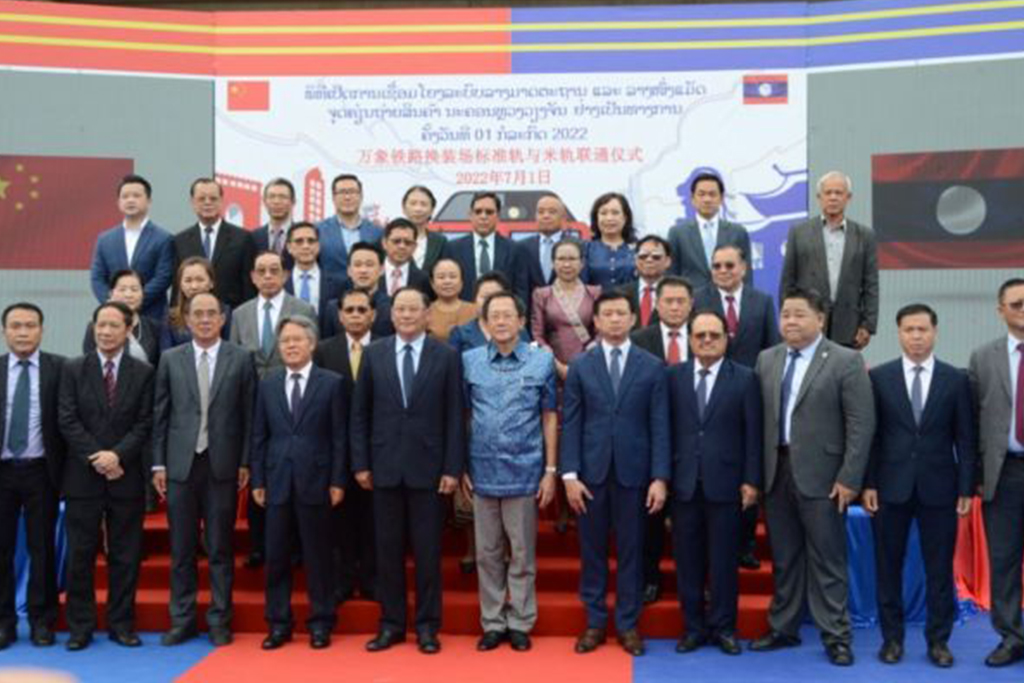
ພິທີ ເປີດການເຊື່ອມໂຍງລະບົບລາງມາດຕະຖານ ແລະ ລາງໜື່ງແມັດ ຈຸດຄ່ຽນຖ່າຍສິນຄ້າ ນະຄອນຫຼວງວຽງຈັນ ໃນວັນທີ 1 ກໍລະກົດ 2022 ໃຫ້ກຽດຕັດແຖບຜ້າເປີດຢ່າງເປັນທາງການໂດຍທ່ານ ສອນໄຊ ສີພັນດອນ ຮອງນາຍົກລັດຖະມົນຕີ ແຫ່ງ ສປປລາວ
New rail link to speed up logistics, transport operations
A track change station was officially opened at the Vientiane Logistics Park on Friday, creating an official link between the Laos-China Railway and the Laos-Thailand Railway.
The move greatly improves multimodal international logistics and land-sea transport, thus offering lucrative trade opportunities.
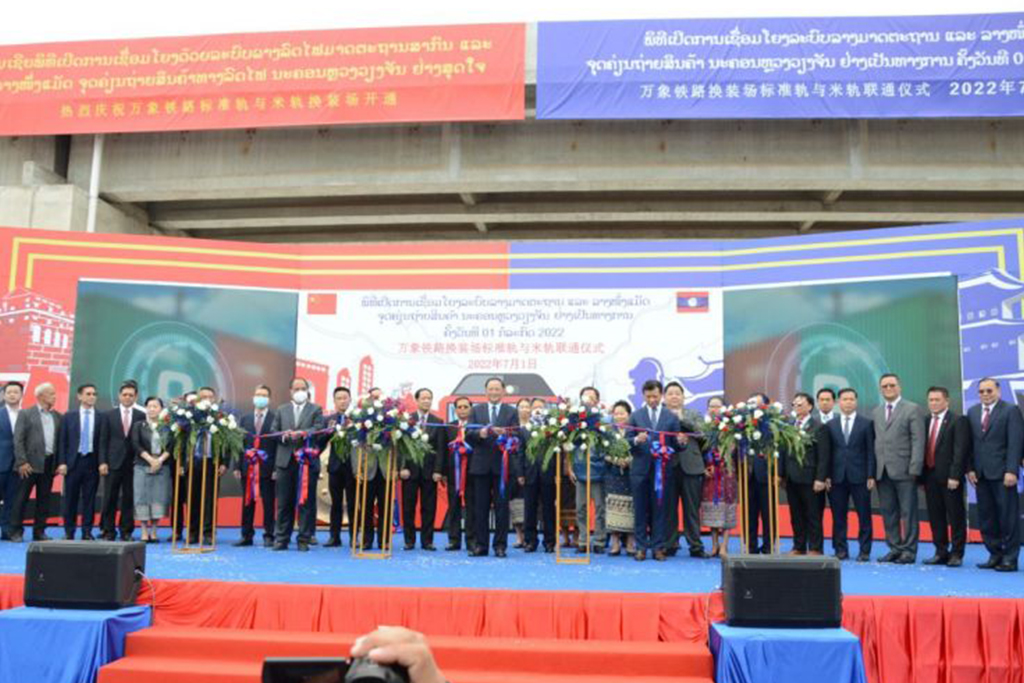
A ceremony to inaugurate the link between the 1.435 metre standard-gauge Laos-China rail track and the one metre-gauge Laos-Thailand railway took place at the park.
Speaking at the ceremony, Chairman of Vientiane Logistics Park Co., Ltd., Mr Chanthone Sithixay, said the rail link was a new milestone in freight transit and transport between Asean, the 10-member regional bloc, and China, the world’s second largest economy
“It (the link) will streamline the transport system and save time and money,” he told guests at the ceremony.
“This offers huge advantages to businesses in Laos, China and Thailand as well as other business operators across the region.”
The successful linking of the two tracks marks the completion of construction of a 2.8-km track that stretches from the Laos-China Railway’s Vientiane South Station to the logistics park and its Thanaleng Dry Port to link with the Laos-Thailand Railway there.
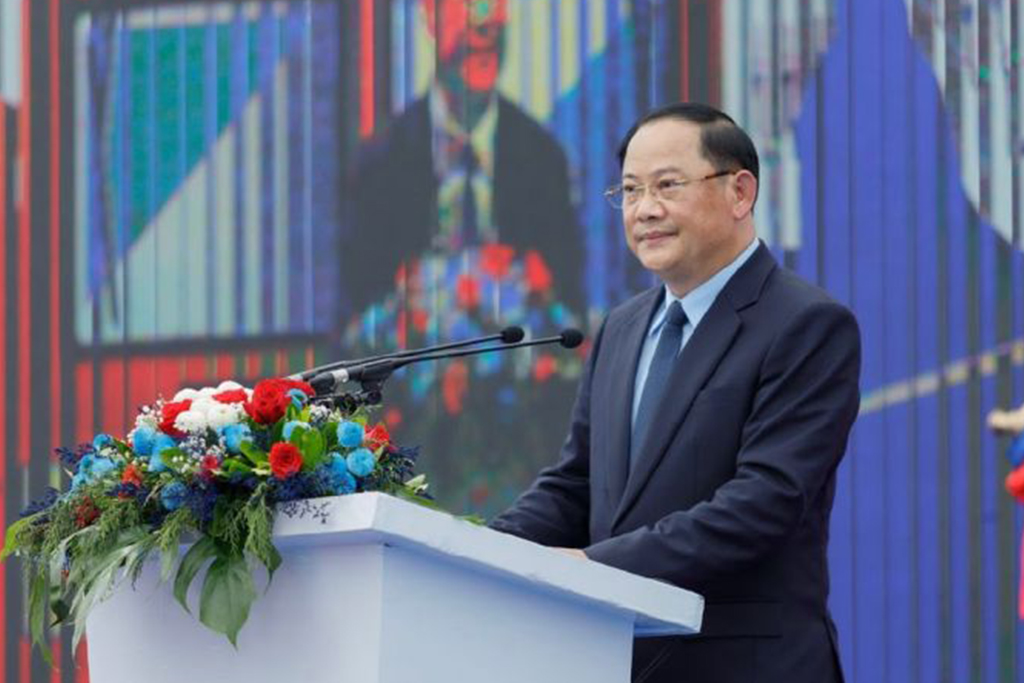
The different-sized tracks mean that freight transport requires reloading operations at the logistics park’s freight transit yard.
As part of China’s Belt and Road Initiative (BRI) – a planned global transport network – the Laos-China Railway connects to the China-Europe rail line, linking Asean to European markets through a cost-effective transport system.
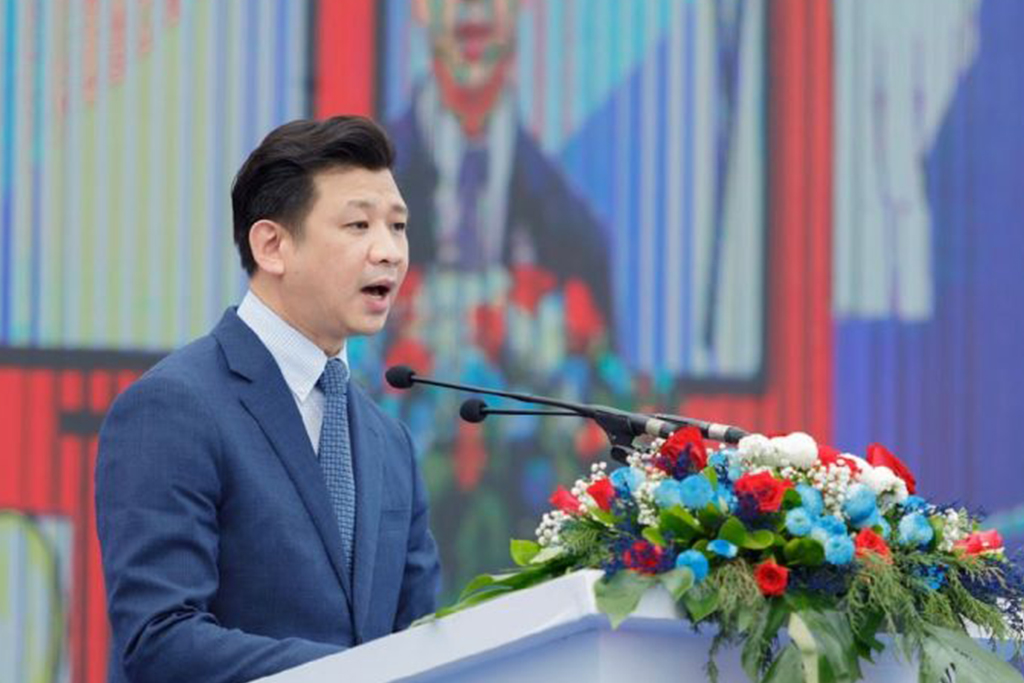
Presiding over the inauguration ceremony, Deputy Prime Minister Dr Sonexay Siphandone said the two railways and their link will create investment opportunities and bolster Laos’ efforts to realise its strategy to transform the landlocked country into a major land link.
“The link (of the two railways) is significant. It is a historic event for Laos,” he told guests at the ceremony.
“The link will widely and enormously bolster Lao socio-economic development.”
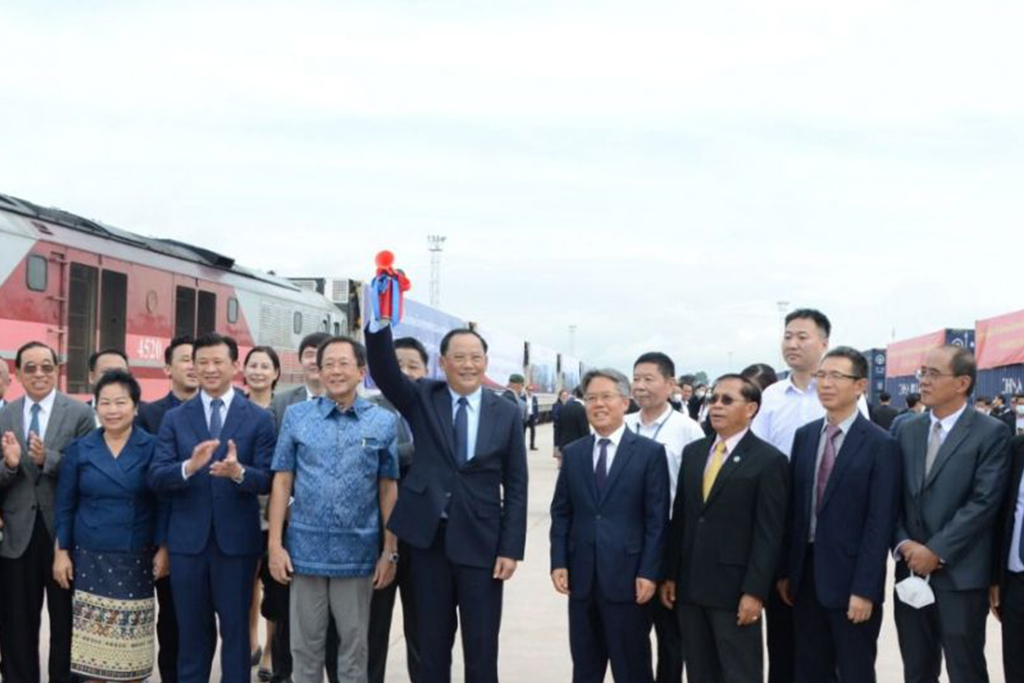
Also attending the inauguration ceremony at the logistics park were Chinese Ambassador to Laos Jiang Zaidong, Thai Ambassador to Laos Jesda Katavetin, senior officials and business executives.
Yuan Minghao, general manager of the Laos-China Railway Co., Ltd., said the Laos-China Railway heading north connects to rail networks that reach major cities such as Chengdu, Chongqing, Wuhan and Xi’an and many logistics distribution centres in China, as well as the China-Europe rail network.
Heading south, the Laos-China Railway links to transport networks that reach several major ports including Thailand’s Laem Chabang port and Singapore.
“Over time it will become a new land and sea transport link and connectivity route,” he said through an interpreter, referring to the Laos-China Railway and its connected networks.
Businesses have been harvesting the lucrative trade opportunities that the railways and the logistics park are offering.
President of Thailand-based Kaocharoen Train Transport Co., Ltd., Panya Paputsaro, said he was able to cut transport costs by up to 40 percent when shipping containers from Thailand to Europe compared to the cost of sea transport.
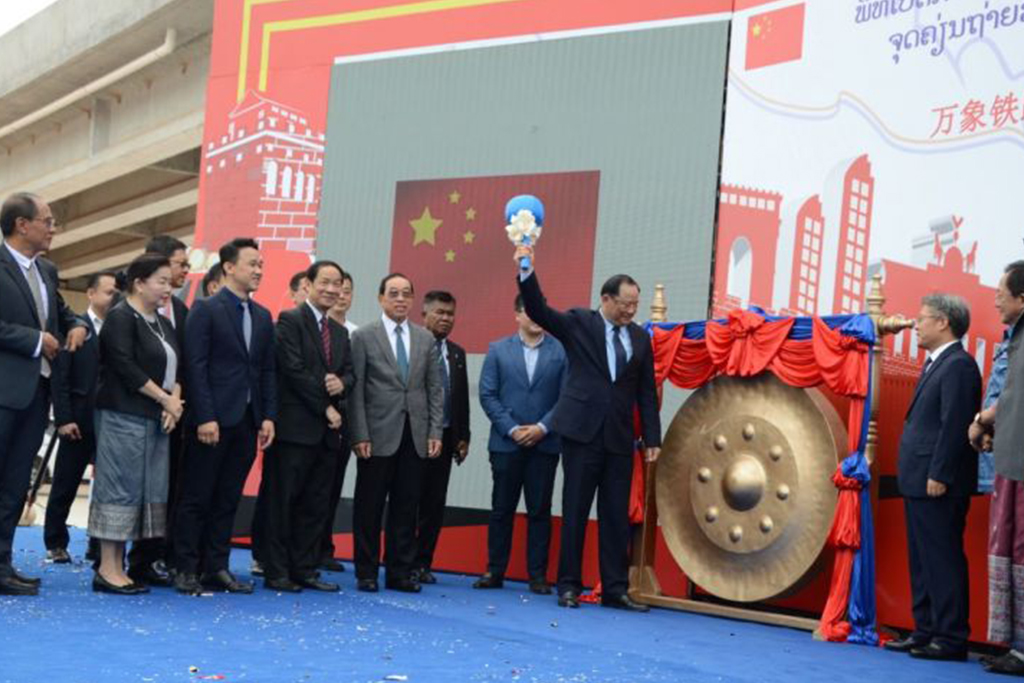
The Thai businessman, who also attended the inauguration ceremony, had 54 empty containers that he planned to load with durian grown in Thailand for shipment to China through Laos.
“The cost of transport is remarkably reduced,” he said, referring to the amount spent on rail transport.
By rail, it takes just over one day to send containers from Thailand to Chinese markets. Most of the goods that Mr Panya exports to China are farm products.
Next month, Mr Panya plans to ship dried food from Thailand to Russia by rail, which will take 13-15 days to reach Russian markets. This is a much shorter time than the 45 days or so it would take to send the goods by sea, he said.
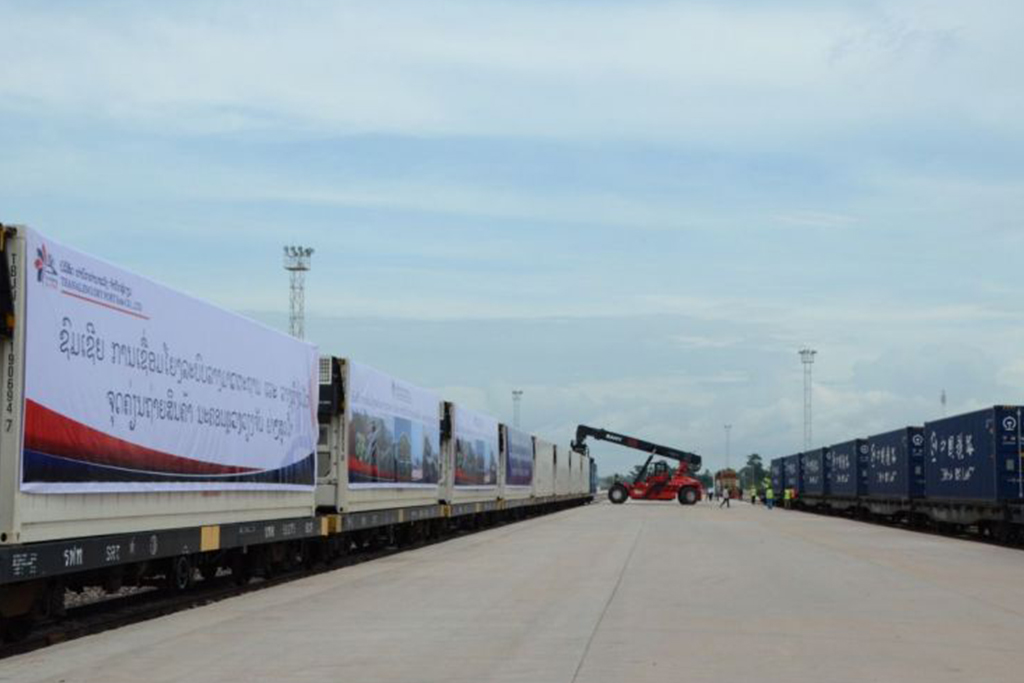
“It is faster and cheaper and the cost is reduced by 40 percent,” he added.
Mr Panya has also received orders for the export of textiles to Germany and France but must wait for the situation in Ukraine to be resolved before he can send goods to Europe beyond Russia.
Since the Thanaleng Dry Port opened for service on December 4, 2021, it has seen a lot of business, giving a big boost to the freight business and to trade.
Over the first four months of this year, the dry port provided import-export and transit shipment services for 11,092 twenty-foot equivalent units (TEU), mostly through railways.
Of the total TEUs, 85 percent contained goods for import and export across the Laos-China border, 14 percent involved imports and exports across the Laos-Thailand border, and the remaining one percent was shipped directly through Thailand’s and China’s railways

